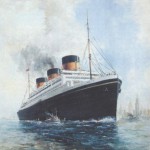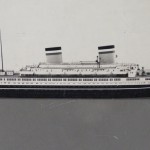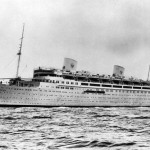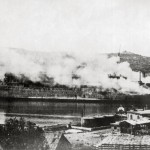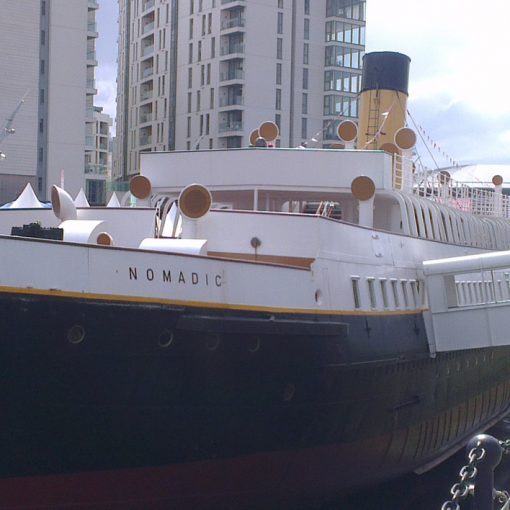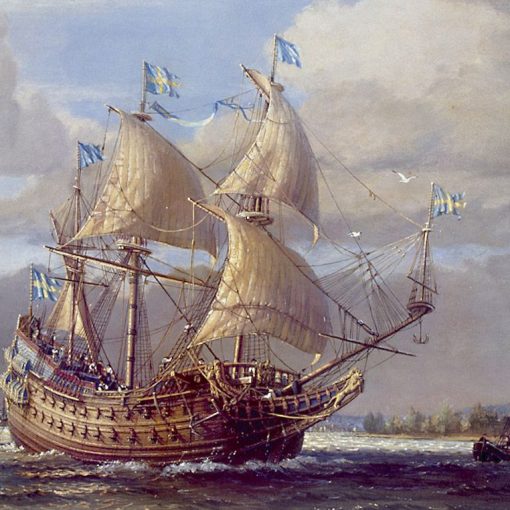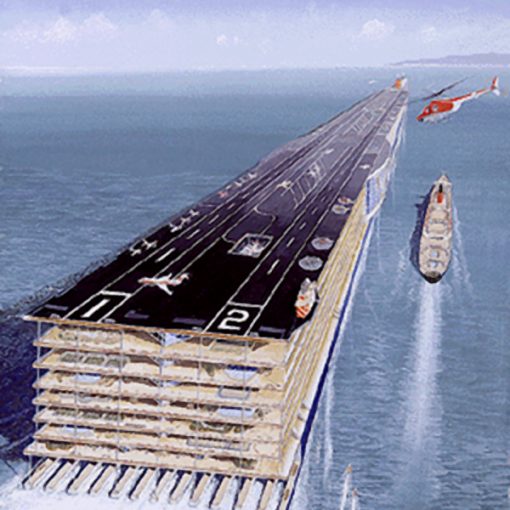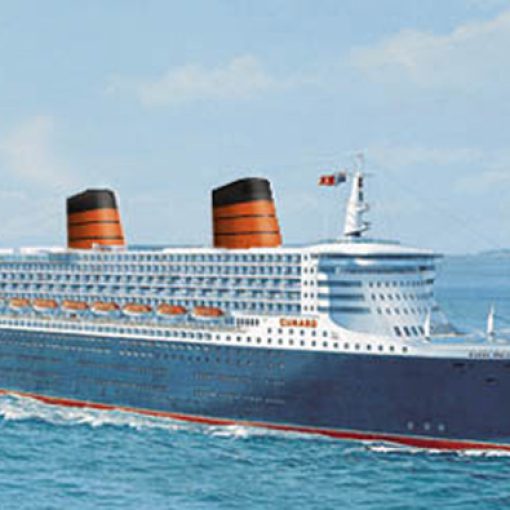In this section I am going to concentrate on those intended ocean liners that never were to sail the oceans of the world. Some of the liners were abandoned before they were even constructed wholly, while others were destroyed by the rages of war before they had a chance of entering service. Some of the liners were altered into completely different ships before construction commenced. Most of the liners I am going to write about would have been stunning showpieces of their age but as they were never to be, they would only be remembered as the Intended Giants of the Seas.
The White Star Company has commissioned the great Belfast shipbuilders Harland & Wolff to build an Atlantic steamer that will beat the record in size and speed. She has already been named Gigantic, and will be 700 feet long, 65 feet 7½ inches beam and 4,500 horsepower. It is calculated that she will steam 22 knots an hour, with a maximum speed of 27 knots. She will have three screws, two fitted like the Majestic’s, and the third in the centre. She is to be ready for sea in March 1894.’
This article was published in the New York Times on September 17, 1892. With these, for the time, very impressive figures, it is clear that White Star had its aim on recapturing the Blue Riband of the Atlantic, which recently had been taken from their Teutonic by the Inman & International Line’s City of Paris. However, this liner was never realised and the next major liner for White Star came in 1899 and was called Oceanic. As she proved an immense success as the largest ship in the world – not counting the Great Eastern from 1860 – the shipping line felt that a sister to the Oceanic would be required. She would be of the same dimensions and appearance as the first sister and be called Olympic. But when White Star Line’s director Thomas Henry Ismay died in 1899, the order of the Olympic was cancelled and all effort was put in constructing the Big Four-class consisting of Celtic (1901), Cedric (1903), Baltic (1904) and Adriatic (1907).
After the terrible loss of the Titanic in 1912, White Star naturally planned replacements for her. A replacement liner called Ceric, Germanic or Homeric – depending on when in the planning stage they were – of approximately 30,000 gross tons was supposed to team with the Olympic and the future Britannic. Also, more or less serious plans of a ship that would be the first to exceed a thousand feet in length were proposed. None of these liners ever came very far in the planning stage due to the outbreak of World War I. After the war White Star received the two German liners Columbus and Bismarck – who they renamed Homeric and Majestic – and thereby the pre-war Titanic-replacements were deleted once and for all.
When the world had recovered from World War I, shipping companies all over the world started to build new ships. The Cunard Line began construction of the Queen Mary and the French Line commenced work on their giant Normandie. Naturally, the White Star Line also had wanted a large post war liner and gave Harland & Wolff the order to build a liner with an estimated gross tonnage of 60,000 and a length of 1,010 feet. With this length, it is highly plausible that the actual gross tonnage would have ended up somewhere near the 80,000-ton mark. The ship, who was intended to be named Oceanic, would have a service speed above that of Germany’s Bremen and thereby putting White Star in the race for the Blue Riband once again. In appearance, she would resemble the two later 27,000 gross ton motor liners Britannic and Georgic but she would sport three squat funnels instead of two. The keel was laid at Harland & Wolff on June 28, 1928. But when the Depression struck the next year, work on the giant ship was abandoned. Almost the entire keel of the Oceanic had been laid, but it was demolished and reused on the earlier mentioned Britannic in 1930. Later, White Star merged with Cunard and had their share when they could take part of the Queen Mary.
Before the Second World War erupted and once again plunged the world into global carnage, a running mate to the French Line’s famous Normandie called Bretagne was actually being planned for. This liner would be similar to the Normandie, but only have two funnels. Her massive power plant would secure that the Queen Mary never regained the Blue Riband from France. The ship was to be a staggering 100,000 gross tons large. But with the event of war, the Bretagne-project was abandoned before it even had been seriously thought of.
Ever since the take-over of the Imperator, Vaterland and Bismarck by the United States and Britain after World War I, the Hamburg Amerika Linie had been standing in the shadow of Norddeutscher Lloyd who commissioned great liners such as Bremen and Europa between the two wars, while Hamburg Amerika only aimed at intermediate sized liners. But in the late 1930s, they commissioned their first large liner since the Bismarck from the Blohm & Voss shipyard in Hamburg. She was to be named Vaterland and have a gross tonnage of 41,000. Her length would be an astonishing 824 feet and her turboelectric engines would power her at a service speed of 23.5 knots. She would be very streamlined and actually have some of the Normandie’s lean grace. The Vaterland was launched in 1940 but laid up because of the war. Before fitting out could commence, the great liner was bombed during Allied raids in Hamburg on July 25, 1943. The wreckage of the liner had been entirely scrapped by 1948.
While the dominance of the Atlantic was fought for by for example Cunard, Norddeutscher Lloyd and the French Line, smaller shipping companies also wanted to show themselves a worthy alternative on the North Atlantic. The Swedish American Line had started business back in 1915 and slowly progressed into one of the most respected shipping companies on the North Atlantic. After the war, they built two large liners called Gripsholm and Kungsholm. As the 1940 approached these two vessels were showing signs of age and SAL began planning of a giant replacement. The replacement would consist of only one ship and that ship would be the largest in SAL’s history. They ordered a 30,000 gross ton liner that was to be called Stockholm from the Cantieri Riuniti dell’Adriatico shipyard in Monfalcone, Italy. The liner would be 675 feet long, Diesel driven and have a service speed of 19 knots. When nearly complete in December 1938, the hull of the Stockholm was accidentally burnt out and had to be scrapped. However, the Swedish American Line did not throw in the towel – they ordered Cantieri to build an exact replica of the burnt out vessel and soon they were back in the game again. But as construction of the new Stockholm continued into World War II, neutral Sweden saw no use in acquiring the Stockholm when she was finished in 1941. However, she had the time to complete a trial run for the Swedish American Line in their colours before she was sold to the Italian Government. They renamed her Sabaudia and used her as a troop ship. Between 1943 and 1944 the Germans used her for the same purpose. During an Allied air raid on July 6, 1944 the former Stockholm was sunk outside Trieste. In 1949, the wreckage was raised and scrapped.
Before the giant France of 1962 was commissioned by the French Line, many thoughts of how they would uphold the trans-Atlantic route after the Liberté’s and Île de France’s withdrawal. Of course it eventually ended up with the two funnel France, but the French Line had had trouble deciding on whether they would have one large ship or two smaller ones. Some thought that two small 30,000 gross tons liners would be quite enough instead of one large and expensive ship. In the end, before serious plans of the smaller liners came, a 65,000-ton France was decided upon.
Cunard had similar problems when they had to replace the two Queens in the late Sixties. At first, one large liner similar to the Queen Elizabeth was proposed. She would have two funnels like her predecessor and inside the three-class system would be upheld. The project of this liner was code-named ‘Q3’ – the third Queen. But before the conservative part of Cunard got their will through, other plans of a more modern looking liner came to the surface. Cunard wanted to compete with the gaudy France and then a look from the 1930s would certainly not be very tactic. The modern passenger wanted the best of the best and the newest of the new. Instead, another project – ‘Q4’ – was launched, in the end resulting in the world famous Queen Elizabeth 2 of today.

